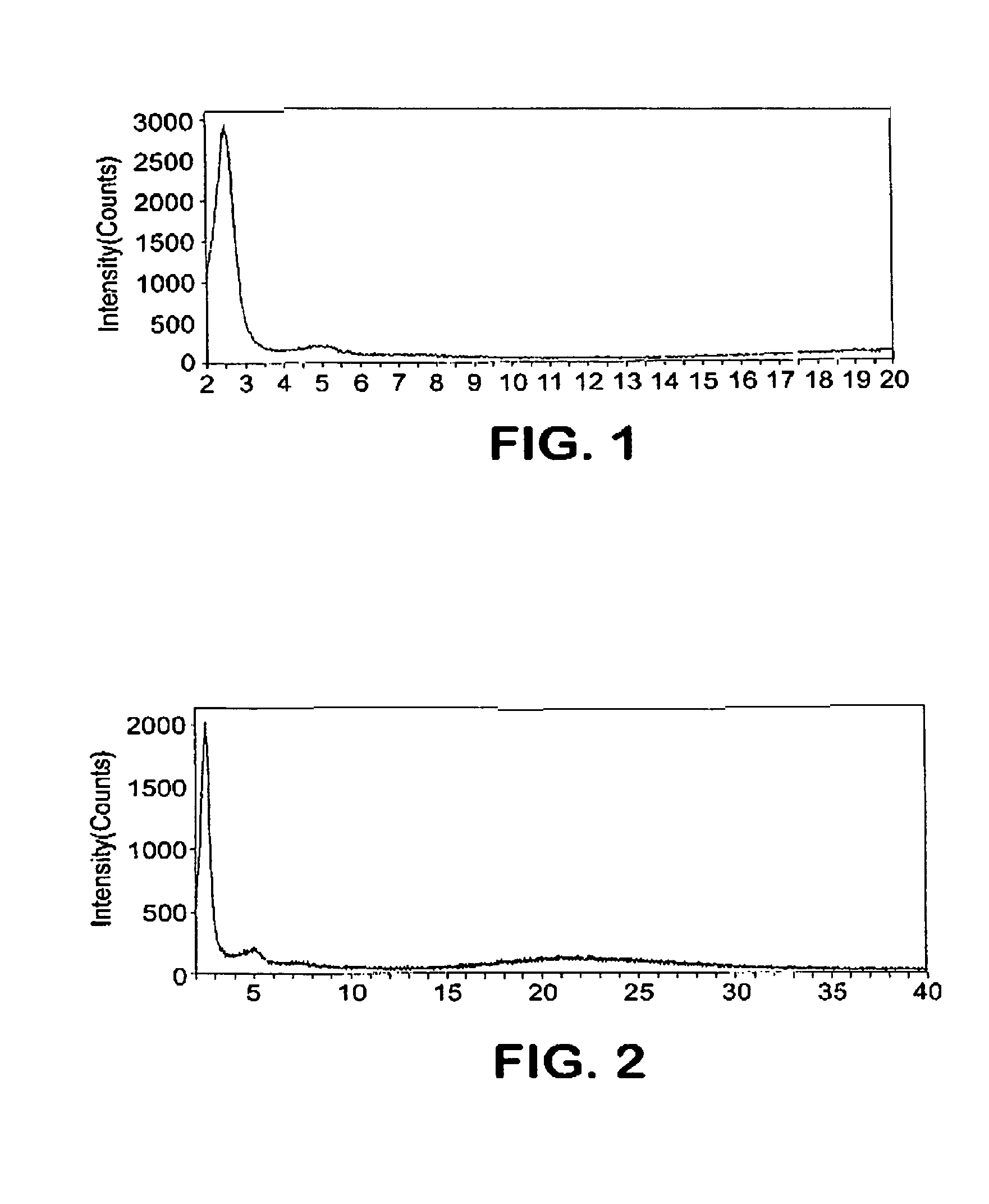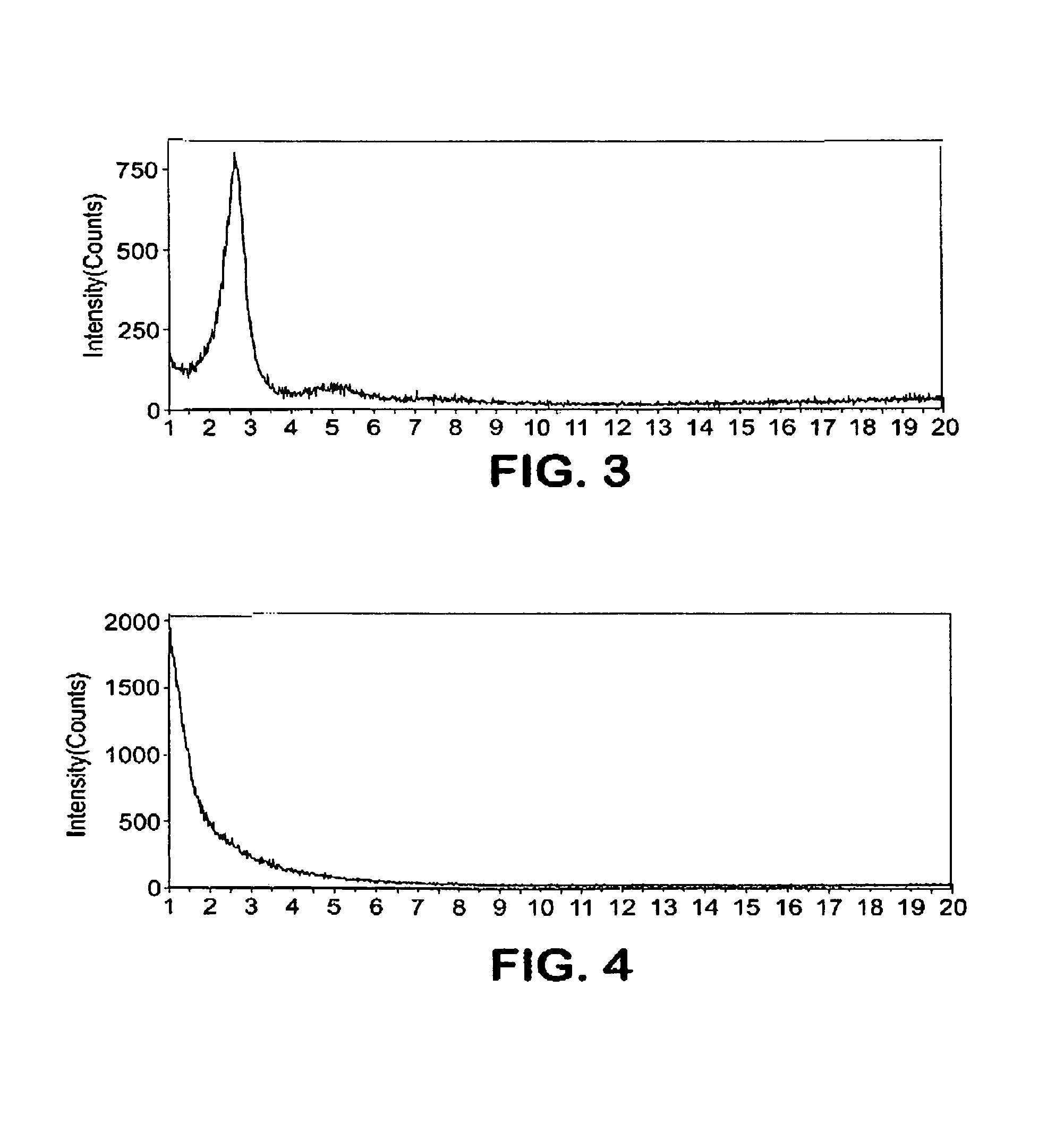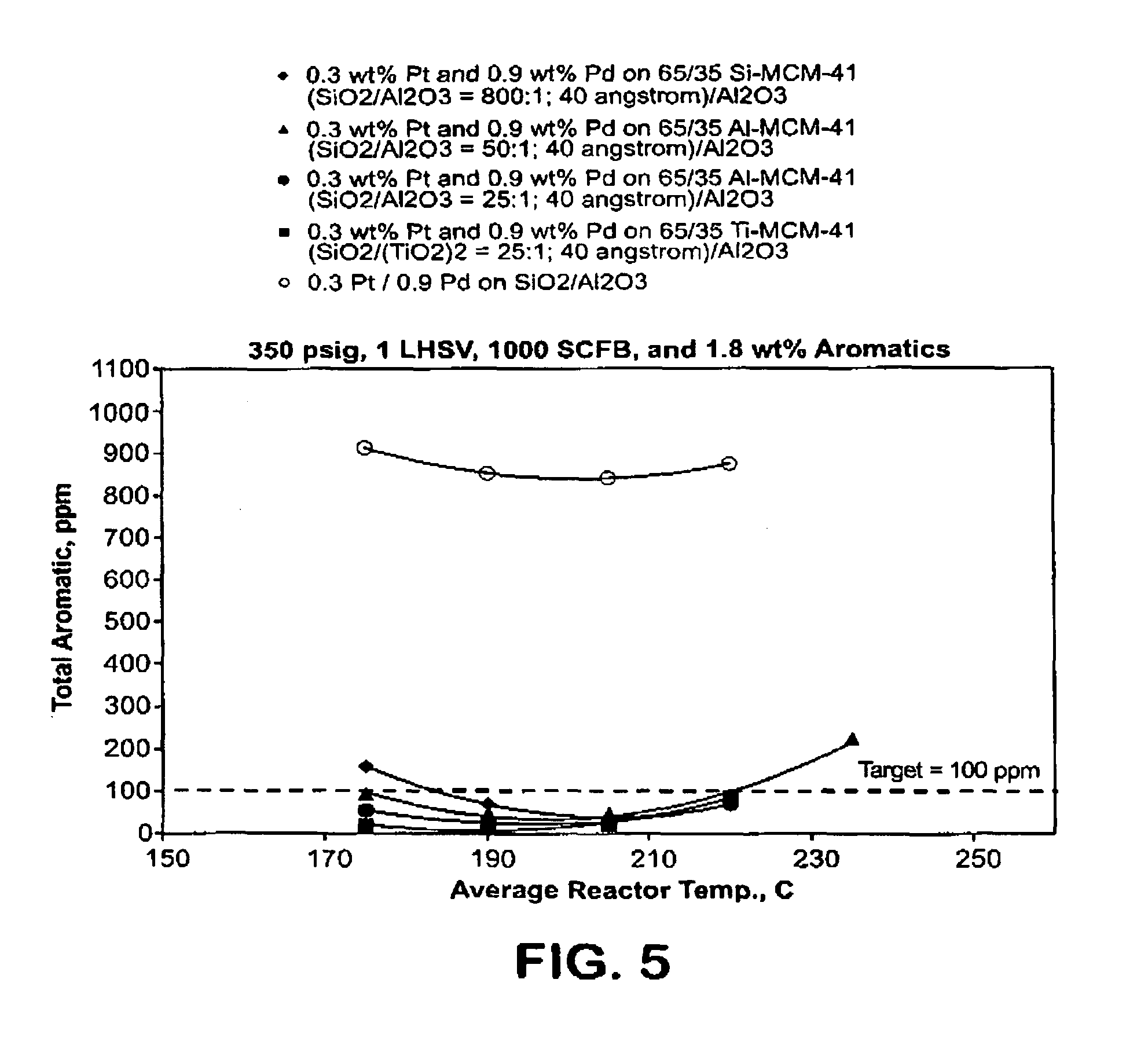Aromatic hydrogenation process
a hydrogenation process and aromatic hydrocarbon technology, applied in the field of aromatic hydrocarbon hydrogenation process, can solve the problems of sulfur poisoning of noble metal catalysts, achieve similar aromatic saturation, improve catalyst activity, and increase the saturation of aromatics
- Summary
- Abstract
- Description
- Claims
- Application Information
AI Technical Summary
Problems solved by technology
Method used
Image
Examples
example 1
Preparation of Small Pore Ti-MCM-41 with SiO2 / (TiO2)2˜50 / 1
[0055]A mixture was prepared from 620 g of water, 250 g of Tetraethylammonium Hydroxide (TEAOH) 35% solution, 370 g of ARQUAD 12 / 37 solution (a C12 surfactant, available from Akzo-Nobel), 38.4 g of Titanium Ethoxide in 40 g of Ethanol solution, and 170 g of Ultrasil. The mixture had the following molar composition:
[0056]
SiO2 / (TiO2)2~50 / 1H2O / SiO2~22TEAOH / Surfactant~1SiO2 / Surfactant~6
[0057]The mixture was reacted at 265° F. (129.5° C.) in a 2-liter autoclave with stirring at 90 RPM for 36 hours. The product was filtered, washed with deionized (DI) water, followed by drying at 250° F. (120° C.) and calcination at 1000° F. (540° C.) for 6 hrs. FIG. 1 shows the XRD pattern of the as-synthesized material. FIG. 1 shows a typical signature for a pure phase of small pore (2 / g.
example 2
Preparation of Small Pore Ti-MCM-41 with SiO2 / (TiO2)2˜50 / 1
[0058]A mixture was prepared from 620 g of water, 250 g of Tetraethylammonium Hydroxide (TEAOH) 35% solution, 370 g of ARQUAD 12 / 37 solution, 38.4 g of Titanium Ethoxide in 40 g of Ethanol solution, and 170 g of Ultrasil. The mixture had the following molar composition:
[0059]
SiO2 / (TiO2)2~50 / 1H2O / SiO2~22TEAOH / Surfactant~1SiO2 / Surfactant~6
[0060]The mixture was reacted at 212° F. (100° C.) in a 2-liter autoclave with stirring at 90 RPM for 48 hours. The product was filtered, washed with deionized (DI) water, followed by drying at 250° F. (120° C.) and calcination at 1000° F. (540° C.) for 6 hrs. FIG. 2 shows the XRD pattern of the as-synthesized material, which displays typical signature for a pure phase small pore (2 / g.
example 3
Preparation of Small Pore Ti-MCM-41 with SiO2 / (TiO2)2˜50 / 1
[0061]A mixture was prepared from 805 g of water, 250 g of Tetraethylammonium Hydroxide (TEAOH) 35% solution, 185 g of ARQUAD 12 / 37 solution, 61 g of n-Decylmethylammonium Bromide, 38.4 g of Titanium Ethoxide in 40 g of Ethanol solution, and 170 g of Ultrasil. The mixture had the following molar composition:
[0062]
SiO2 / (TiO2)2~50 / 1H2O / SiO2~22TEAOH / Surfactant~1SiO2 / Surfactant~6
[0063]The mixture was reacted at 212° F. (100° C.) in a 2-liter autoclave with stirring at 90 RPM for 36 hours. The product was filtered, washed with deionized (DI) water, followed by drying at 250° F. (120° C.) and calcination at 1000° F. (540° C.) for 6 hrs. FIG. 3 shows the XRD pattern of the as-synthesized material, which shows a typical signature for a pure phase of small pore (2 / g.
PUM
| Property | Measurement | Unit |
|---|---|---|
| temperature | aaaaa | aaaaa |
| diameter | aaaaa | aaaaa |
| diameter | aaaaa | aaaaa |
Abstract
Description
Claims
Application Information
 Login to View More
Login to View More - R&D
- Intellectual Property
- Life Sciences
- Materials
- Tech Scout
- Unparalleled Data Quality
- Higher Quality Content
- 60% Fewer Hallucinations
Browse by: Latest US Patents, China's latest patents, Technical Efficacy Thesaurus, Application Domain, Technology Topic, Popular Technical Reports.
© 2025 PatSnap. All rights reserved.Legal|Privacy policy|Modern Slavery Act Transparency Statement|Sitemap|About US| Contact US: help@patsnap.com



